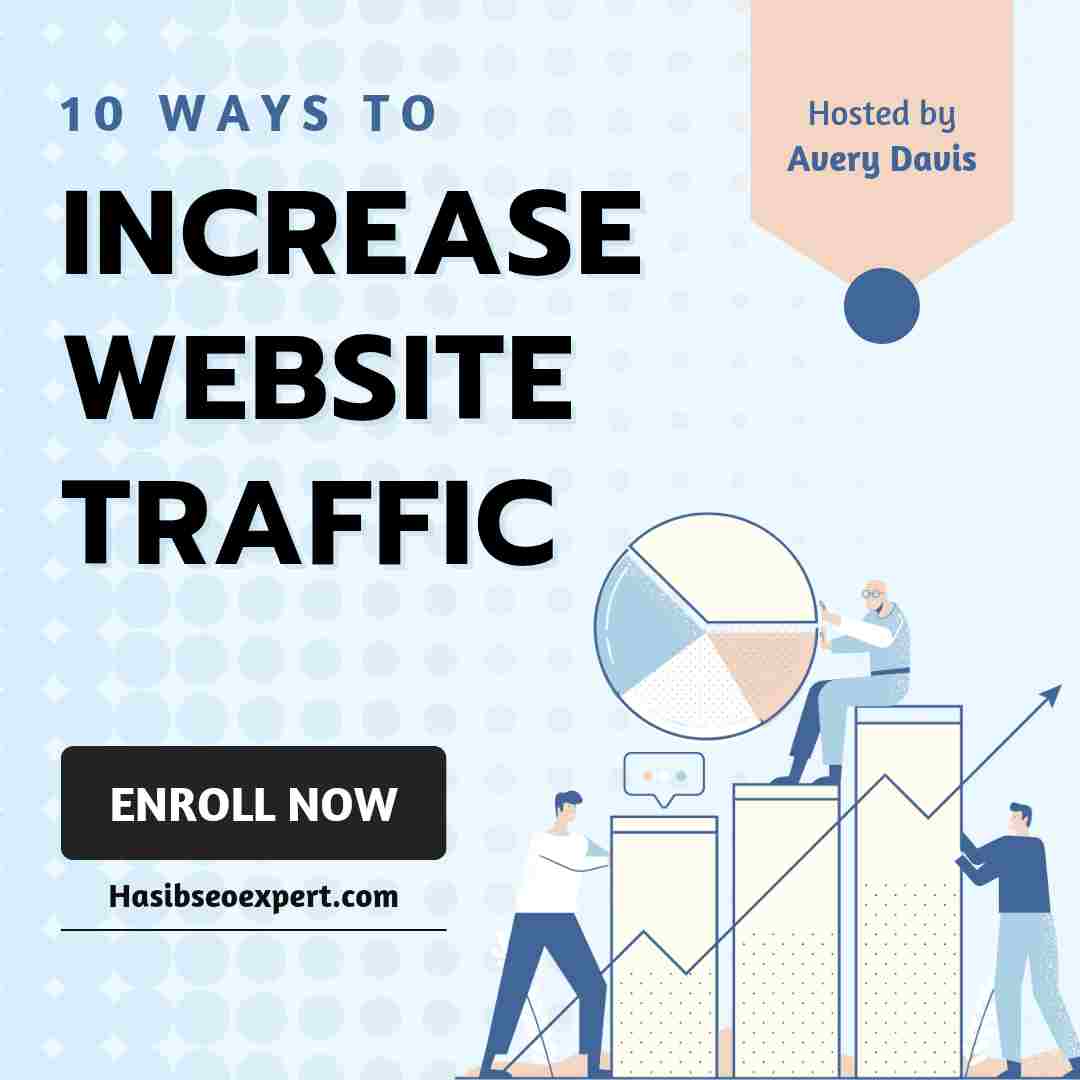INCREASE WEBSITE TRAFFIC ,
Increasing website traffic is a fundamental goal for businesses and individuals aiming to enhance their online presence, attract potential customers, and boost revenue. Achieving this requires a multifaceted approach that encompasses various strategies, from optimizing your website for search engines to leveraging social media platforms. This comprehensive guide delves into effective methods to drive more visitors to your site, providing actionable insights and best practices.
1. Optimize for Search Engines (SEO)
Search Engine Optimization (SEO) is the practice of enhancing your website’s visibility on search engine results pages (SERPs). And A well-optimized site ranks higher in search results, and leading to increased organic traffic. Key aspects of SEO include:
Keyword Research: Identify relevant keywords that your target audience is searching for. Utilize tools like Google’s Keyword Planner to discover high-volume search terms.
On-Page Optimization: Incorporate chosen keywords naturally into your website’s content, meta descriptions, headers, and image alt texts. Ensure your content is informative and provides value to readers.
Technical SEO: Improve site speed, ensure mobile-friendliness, and create an XML sitemap to help search engines crawl and index your site efficiently.
User Experience (UX): Design a user-friendly interface with intuitive navigation, clear calls-to-action, and engaging visuals to reduce bounce rates and encourage longer site visits.
Implementing these SEO strategies can significantly enhance your website’s visibility and attract more organic traffic.
2. Create High-Quality Content
Consistently publishing valuable, informative, and engaging content is crucial for attracting and retaining visitors. Consider the following approaches:
Blogging: Write articles on topics relevant to your audience, addressing their pain points and providing solutions.
Visual Content: Incorporate images, infographics, and videos to make your content more engaging and shareable.
Content Calendar: Develop a content calendar to ensure regular posting and maintain audience interest.
High-quality content encourages sharing and positions your site as an authority in your niche.
3. Leverage Social Media Platforms
Social media platforms are powerful tools for driving traffic to your website. To maximize their potential:
Platform Selection: Choose platforms that align with your target audience’s preferences (e.g., LinkedIn for professionals, Instagram for younger demographics).
Content Promotion: Share your website content on social media, utilizing engaging captions and visuals to encourage clicks.
Engagement: Interact with your followers by responding to comments, hosting live sessions, and participating in relevant discussions.
Engaging with users on platforms like Facebook, Twitter, LinkedIn, and Instagram can drive traffic back to your website.
4. Utilize Email Marketing
Email marketing remains a highly effective strategy for driving website traffic. To leverage it:
Build an Email List: Collect emails through sign-up forms, offering incentives like exclusive content or discounts.
Personalized Campaigns: Send tailored emails to different segments of your audience based on their interests and behaviors.
Call-to-Action: Include clear links to your website in emails, encouraging recipients to visit for more information or special offers.
Regular newsletters keep your audience engaged and encourage repeat visits.
5. Engage in Guest Blogging
Writing articles for reputable websites in your industry exposes your brand to new audiences and can drive referral traffic back to your site. To do this effectively:
Identify Relevant Blogs: Look for blogs that cater to your target audience and accept guest contributions.
Pitch Valuable Content: Propose topics that provide value to the host blog’s readers, showcasing your expertise.
Include Backlinks: Naturally incorporate links to your website within the content or author bio to drive traffic.
Guest blogging not only drives traffic but also enhances your site’s authority through quality backlinks.
6. Implement Internal Linking
Incorporating internal links within your content guides visitors to related articles or pages on your site. This practice:
Improves Navigation: Helps users discover more of your content, enhancing their experience.
Distributes Link Equity: Passes authority to other pages, potentially improving their search rankings.
Increases Page Views: Encourages visitors to spend more time on your site, reducing bounce rates.
Effective internal linking can boost user engagement and SEO performance.
7. Build Quality Backlinks
Acquiring backlinks from reputable websites enhances your site’s authority and search engine ranking. To build quality backlinks:
Create Link-Worthy Content: Develop comprehensive guides, original research, or infographics that others want to reference.
Outreach: Contact industry influencers, bloggers, and journalists to inform them about your valuable content.
Guest Posting: Contribute high-quality articles to authoritative sites, including links back to your site.
Focus on earning editorial links through high-quality content and outreach efforts.
8. Update and Repurpose Content
Refreshing existing content keeps it relevant and accurate, while repurposing content into different formats reaches diverse audiences. Consider:
MD. Hasibur Rahman
University of Chittagong INCREASE WEBSITE TRAFFICINCREASE WEBSITE TRAFFIC



Leave a Reply